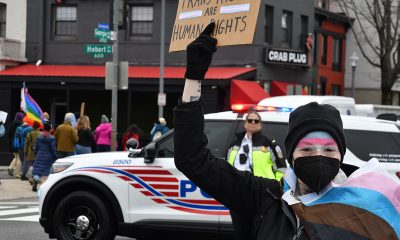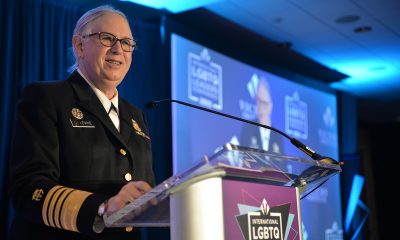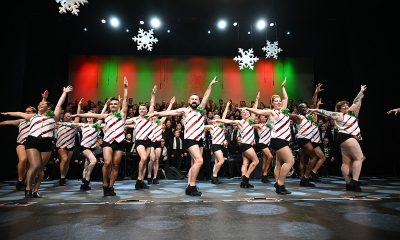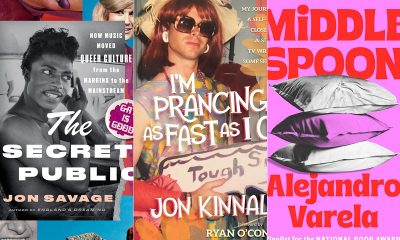Commentary
Returning to the ‘Happiest Place on Earth’
Orlando resilient, defiant after Pulse massacre
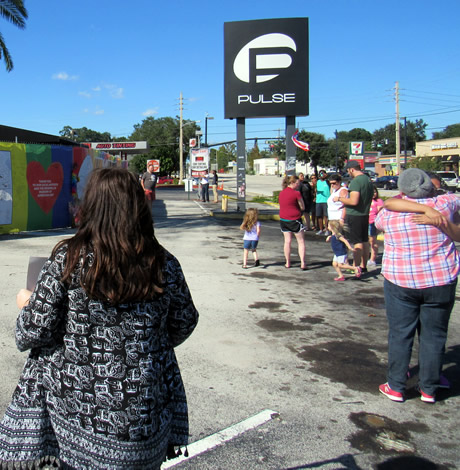
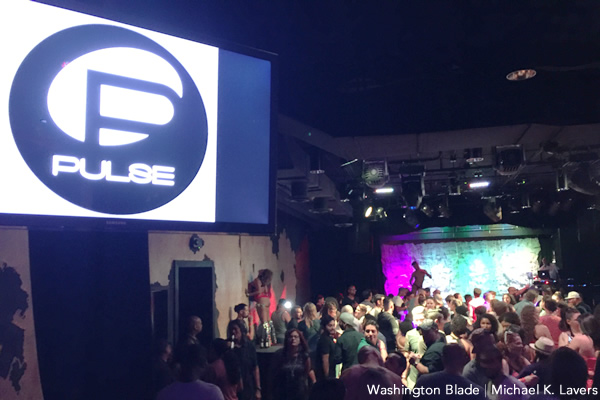
The Abbey in Orlando, Fla., hosted a post-Hurricane Matthew party on Oct. 8, 2016, that paid tribute to the victims of the Pulse nightclub massacre. (Washington Blade photo by Michael K. Lavers)
The DJ was playing a variety of songs that included Montell Jordan’s “This Is How We Do It” and the Notorious B.I.G.’s “Hypnotize.” Partygoers were dancing bachata and merengue while others were smoking hookah pipes on the outdoor patio that overlooked East Pine Street.
Drag queens from the Pulse nightclub took to the stage at around 12:30 a.m.
“You have to keep the memories of your friends going,” said Neema Bahrami, the Pulse nightclub’s entertainment manager who emceed the party that took place after Hurricane Matthew lashed the area with tropical storm force winds and torrential rain. “You never forget the ones that you’ve lost.”
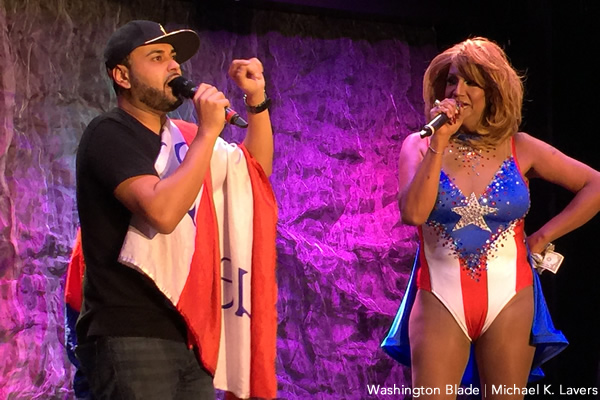
Neema Bahrami of the Pulse nightclub, left, speaks at a post-Hurricane Matthew party in Orlando, Fla., on Oct. 9, 2016. (Washington Blade photo by Michael K. Lavers)
I flew to the city that is known around the world as the “Happiest Place on Earth” less than 12 hours after the deadliest mass shooting in modern U.S. history took place. The city in which I landed on that sultry Sunday afternoon in Central Florida was shell-shocked. I spent the next five days in the City Beautiful reporting on the massacre and its impact on Orlando’s LGBT and Latino communities. I was also trying in vain to make sense of a tragedy that was deeply personal to me as an openly gay man who writes for the country’s oldest LGBT newspaper.
Frankie “Jimmy” de Jesús, Angel Candelario Padró and Gilberto Silva Menéndez are among the 23 LGBT Puerto Ricans who died inside the Pulse nightclub. I interviewed De Jesús’ mother, Candelario’s aunt and Silva’s sister in July while I was in Puerto Rico to report on the massacre’s disproportionate impact on the island’s LGBT community.
I had the honor of meeting Christine Leinonen, the mother of Christopher “Drew” Leinonen, who died inside the Pulse nightclub with his fiancé, Juan Guerrero, in August before she spoke at a gun control rally in West Potomac Park in D.C. I have reported on advocacy groups’ response to an issue that many LGBT Americans did not think impacted them directly until the Pulse nightclub massacre took place. My colleagues and I have also covered the way that Donald Trump and Hillary Clinton have responded to what transpired in Orlando on June 12.
The emotions and conflicting feelings that I had about the massacre were on full display when I was in Orlando in the days after June 12. I continue to struggle with the shooting that shook my community to its core.
I nearly became emotional on Sunday when I was eating lunch at a Vietnamese restaurant near the GLBT Community Center of Central Florida and began reading the ads in the Orlando Pride guide that paid tribute to those who died inside the Pulse nightclub. I felt sick a few hours later when I was watching the presidential debate on my flight from Atlanta to D.C. and Donald Trump specifically mentioned Orlando in his response to a Muslim woman’s question about Islamophobia in the U.S. at the presidential debate. I had tears in my eyes when Orlando Mayor Buddy Dyer spoke at the opening of the 2016 Out & Equal Workplace Summit that took place at Walt Disney World last week.
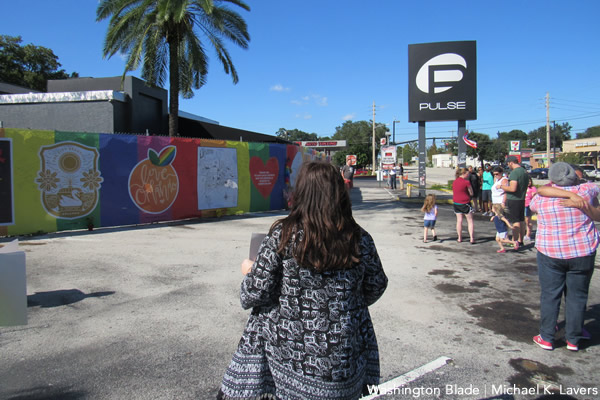
People visit the Pulse nightclub in Orlando, Fla., on Oct. 9, 2016. (Washington Blade photo by Michael K. Lavers)
I visited the makeshift memorial on the fence surrounding the Pulse nightclub on South Orange Avenue three times while I was in Orlando. I drove past it several times because the street on which it is located is a major thoroughfare through the Downtown South neighborhood.
Several young women who were offering free hugs were standing in front of the memorial on Sunday afternoon when I visited it while I was on my way to the airport. One of them embraced me after I took pictures for the Washington Blade. She approached a woman who was sobbing and hugged her as well. I walked to the other side of the memorial that faces a Dunkin’ Donuts and began to cry.
The emotions that I felt in Orlando after the Pulse nightclub massacre remain close to the surface, yet the community’s resilience that I saw on full display at the Abbey over the weekend was nothing short of inspiring.
Orlando City Commissioner Patty Sheehan said at the Out & Equal conference that her city has become “a beacon of hope to the world” in the months since June 12. The “Happiest Place on Earth” and those who call it home have certainly inspired a reporter who remains profoundly affected by what happened at the Pulse nightclub.
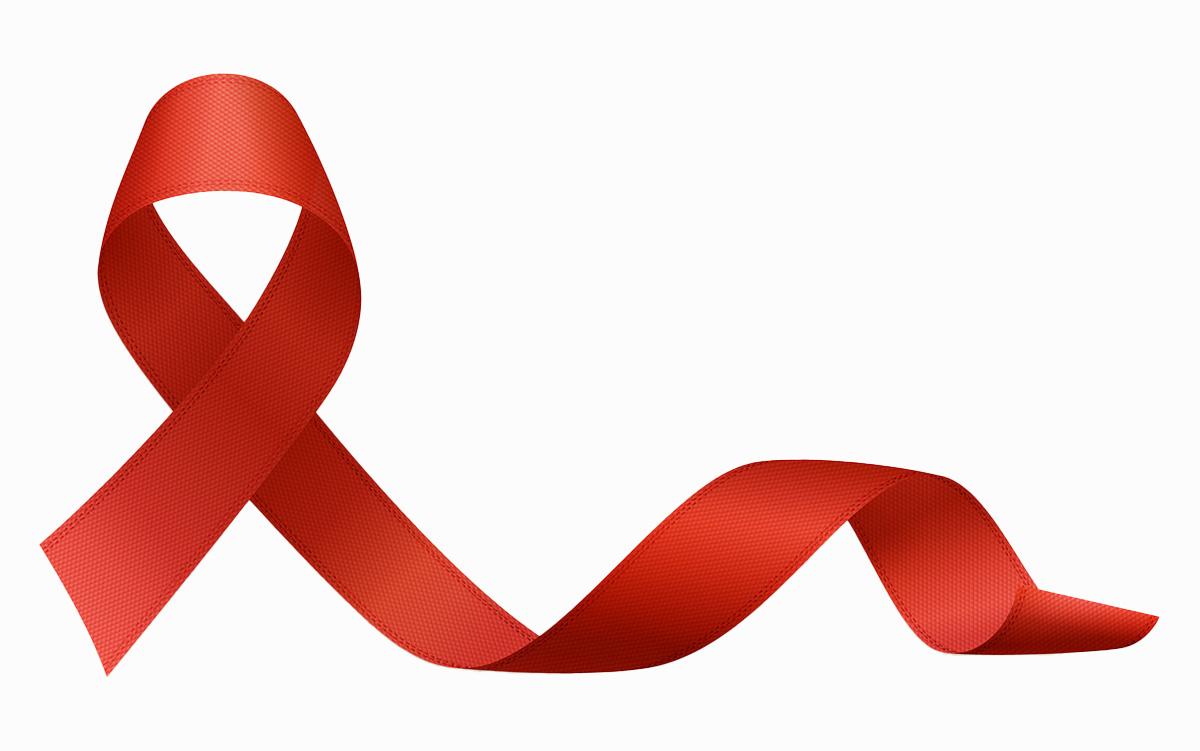
Today, on World AIDS Day, we honor the resilience, courage, and dignity of people living with HIV everywhere especially refugees, asylum seekers, and queer displaced communities across East Africa and the world.
For many, living with HIV is not just a health journey it is a journey of navigating stigma, borders, laws, discrimination, and survival.
Yet even in the face of displacement, uncertainty, and exclusion, queer people living with HIV continue to rise, thrive, advocate, and build community against all odds.
To every displaced person living with HIV:
• Your strength inspires us.
• Your story matters.
• You are worthy of safety, compassion, and the full right to health.
• You deserve a world where borders do not determine access to treatment, where identity does not determine dignity, and where your existence is celebrated not criminalized.
Let today be a reminder that:
• HIV is not a crime.
• Queer identity is not a crime.
• Seeking safety is not a crime.
• Stigma has no place in our communities.
• Access to treatment, care, and protection is a human right.
As we reflect, we must recommit ourselves to building systems that protect not punish displaced queer people living with HIV. We must amplify their voices, invest in inclusive healthcare, and fight the inequalities that fuel vulnerability.
Hope is stronger when we build it together.
Let’s continue to uplift, empower, and walk alongside those whose journeys are too often unheard.
Today we remember.
Today we stand together.
Today we renew hope.
Abraham Junior lives in the Gorom Refugee Settlement in South Sudan.
Commentary
Perfection is a lie and vulnerability is the new strength
Rebuilding life and business after profound struggles
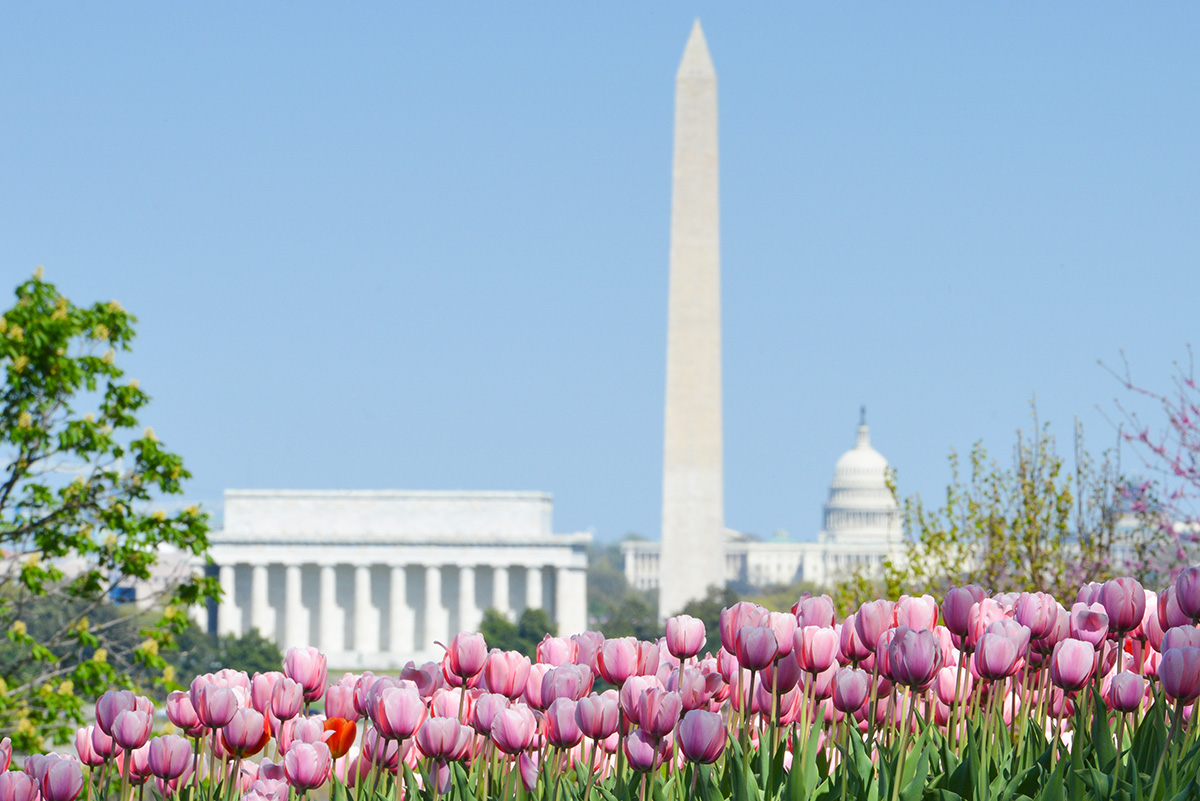
I grew up an overweight, gay Black boy in West Baltimore, so I know what it feels like not to fit into a world that was not really made for you. When I was 18, my mother passed from congestive heart failure, and fitness became a sanctuary for my mental health rather than just a place to build my body. That is the line I open most speeches with when people ask who I am and why I started SWEAT DC.
The truth is that little boy never really left me.
Even now, at 42 years old, standing 6 feet 3 inches and 225 pounds as a fitness business owner, I still carry the fears, judgments, and insecurities of that broken kid. Many of us do. We grow into new seasons of life, but the messages we absorbed when we were young linger and shape the stories we tell ourselves. My lack of confidence growing up pushed me to chase perfection as I aged. So, of course, I ended up in Washington, D.C., which I lovingly call the most perfection obsessed city in the world.
Chances are that if you are reading this, you feel some of that too.
D.C. is a place where your resume walks through the door before you do, where degrees, salaries, and the perfect body feel like unspoken expectations. In the age of social media, the pressure is even louder. We are all scrolling through each other’s highlight reels, comparing our behind the scenes to someone else’s curated moment. And I am not above it. I have posted the perfect photo with the inspirational “God did it again” caption when I am feeling great and then gone completely quiet when life feels heavy. I am guilty of loving being the strong friend while hating to admit that sometimes I am the friend who needs support.
We are all caught in a system that teaches us perfection or nothing at all. But what I know for sure now is this: Perfection is a lie and vulnerability is the new strength.
When I first stepped into leadership, trying to be the perfect CEO, I found Brené Brown’s book, “Daring Greatly” and immediately grabbed onto the idea that vulnerability is strength. I wanted to create a community at SWEAT where people felt safe enough to be real. Staff, members, partners, everyone. “Welcome Home” became our motto for a reason. Our mission is to create a world where everyone feels confident in their skin.
But in my effort to build that world for others, I forgot to build it for myself.
Since launching SWEAT as a pop up fundraiser in 2015, opening our first brick and mortar in 2017, surviving COVID, reemerging and scaling, and now preparing to open our fifth location in Shaw in February 2026, life has been full. Along the way, I went from having a tight trainer six pack to gaining nearly 50 pounds as a stressed out entrepreneur. I lost my father. I underwent hip replacement surgery. I left a relationship that looked fine on paper but was not right. I took on extra jobs to keep the business alive. I battled alcoholism. I faced depression and loneliness. There are more stories than I can fit in one piece.
But the hardest battle was the one in my head. I judged myself for not having the body I once had. I asked myself how I could lead a fitness company if I was not in perfect shape. I asked myself how I could be a gay man in this city and not look the way I used to.
Then came the healing.
A fraternity brother said to me on the phone, “G, you have to forgive yourself.” It stopped me in my tracks. I had never considered forgiving myself. I only knew how to push harder, chase more, and hide the cracks. When we hung up, I cried. That moment opened something in me. I realized I had not neglected my body. I had held my life and my business together the best way I knew how through unimaginable seasons.
I stopped shaming myself for not looking like my past. I started honoring the new ways I had proven I was strong.
So here is what I want to offer anyone who is in that dark space now. Give yourself the same grace you give everyone else. Love yourself through every phase, not just the shiny ones. Recognize growth even when growth simply means you are still here.
When I created SWEAT, I hoped to build a home where people felt worthy just as they are, mostly because I needed that home too. My mission now is to carry that message beyond our walls and into the city I love. To build a STRONGER DC.
Because strength is not perfection. Strength is learning to love an imperfect you.
With love and gratitude, Coach G.
Gerard Burley, also known as Coach G, is a D.C.-based fitness entrepreneur.
Commentary
Elusive safety: what new global data reveals about gender, violence, and erasure
Movements against gender equality, lack of human rights data contributing factors.
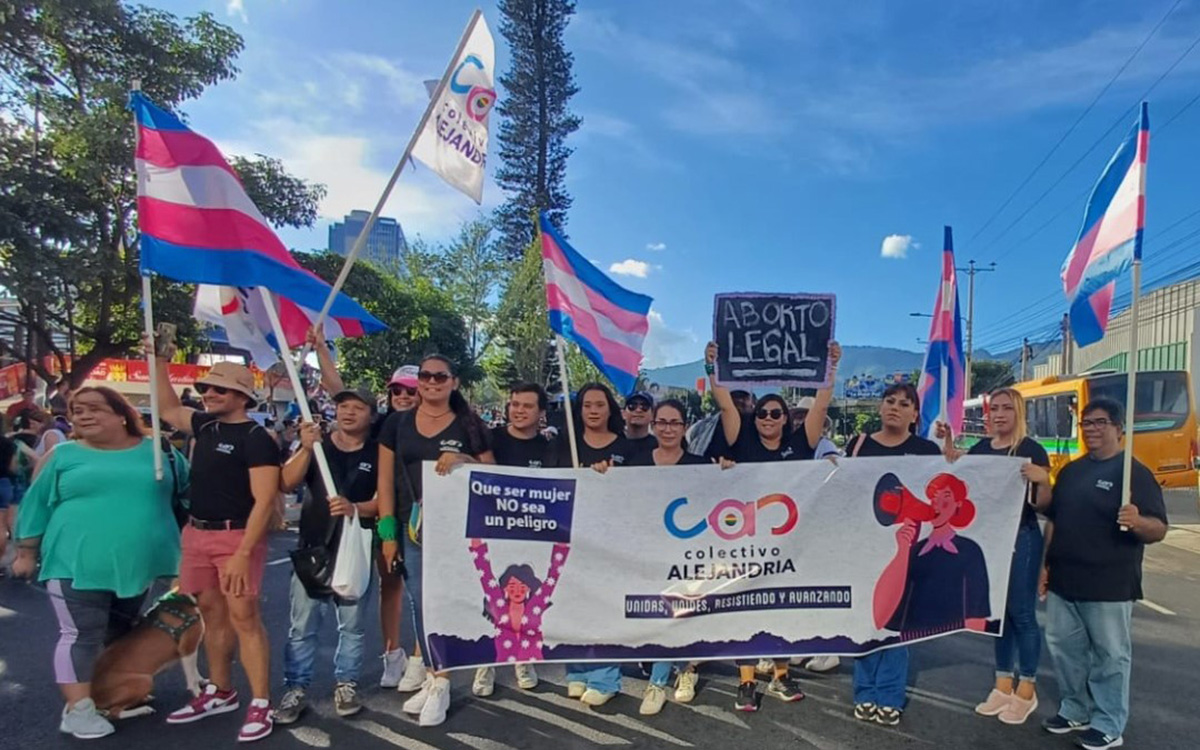
“My identity could be revealed, people can say whatever they want [online] without consequences. [Hormone replacement therapy] is illegal here so I’m just waiting to find a way to get out of here.”
-Anonymous respondent to the 2024 F&M Global Barometers LGBTQI+ Perception Index from Iraq, self-identified as a transgender woman and lesbian
As the campaign for 16 Days Against Gender-Based Violence begins, it is a reminder that gender-based violence (GBV) — both on– and offline — not only impacts women and girls but everyone who has been harmed or abused because of their gender or perceived gender. New research from the Franklin & Marshall (F&M) Global Barometers and its report A Growing Backlash: Quantifying the Experiences of LGBTQI+ People, 2022-2024 starkly show trends of declining safety among LGBTQI+ persons around the world.
This erosion of safety is accelerated by movements against gender equality and the disappearance of credible human rights data and reporting. The fight against GBV means understanding all people’s lived realities, including those of LGBTQI+ people, alongside the rights we continue to fight for.
We partnered together while at USAID and Franklin & Marshall College to expand the research and evidence base to better understand GBV against LGBTQI+ persons through the F&M Global Barometers. The collection of barometers tracks the legal rights and lived experiences of LGBTQI+ persons from 204 countries and territories from 2011 to the present. With more than a decade of data, it allows us to see how rights have progressed and receded as well as the gaps between legal protections and lived experiences of discrimination and violence.
This year’s data reveals alarming trends that highlight how fear and violence are, at its root, gendered phenomena that affect anyone who transgresses traditional gender norms.
LGBTQI+ people feel less safe
Nearly two-thirds of countries experienced a decline in their score on the F&M Global Barometers LGBTQI+ Perception Index (GBPI) from 2022-2024. This represents a five percent drop in global safety scores in just two years. With almost 70 percent of countries receiving an “F” grade on the GBPI, this suggests a global crisis in actual human rights protections for LGBTQI+ people.
Backsliding on LGBTQI+ human rights is happening everywhere, even in politically stable, established democracies with human rights protections for LGBTQI+ people. Countries in Western Europe and the Americas experienced the greatest negative GBPI score changes globally, 74 and 67 percent, respectively. Transgender people globally reported the highest likelihood of violence, while trans women and intersex people reported the highest levels of feeling very unsafe or unsafe simply because of who they are.
Taboo of gender equality
Before this current administration dismantled USAID, I helped create an LGBTQI+ inclusive whole-of-government strategy to prevent and respond to GBV that highlighted the unique forms of GBV against LGBTQI+ persons. This included so-called ‘corrective’ rape related to actual or perceived sexual orientation, gender identity, or expression” and so-called ‘conversion’ therapy practices that seek to change or suppress a person’s gender identity or expression, sexual orientation, or sex characteristics. These efforts helped connect the dots in understanding that LGBTQI+ violence is rooted in the same systems of inequality and power imbalances as the broader spectrum of GBV against women and girls.
Losing data and accountability
Data that helps better understand GBV against LGBTQI+ persons is also disappearing. Again, the dismantling of USAID meant a treasure trove of research and reports on LGBTQI+ rights have been lost. Earlier this year, the US Department of State removed LGBTQI+ reporting from its annual Human Rights Reports. These played a critical role in providing credible sources for civil society, researchers, and policymakers to track abuses and advocate for change.
If violence isn’t documented, it’s easier for governments to deny it even exists and harder for us to hold governments accountable. Yet when systems of accountability work, governments and civil society can utilize data in international forums like the UN Universal Periodic Review, the Convention on the Elimination of All Forms of Discrimination Against Women, and the Sustainable Development Goals to assess progress and compliance and call for governments to improve protections.
All may not be lost if other countries and donors fill the void by supporting independent data collection and reporting efforts like the F&M Global Barometers and other academic and civil society monitoring. Such efforts are essential to the fight against GBV: The data helps show that the path toward safety, equality, and justice is within our reach if we’re unafraid of truth and visibility of those most marginalized and impacted.
Jay Gilliam (he/him/his) was the Senior LGBTQI+ Coordinator at USAID and is a member of the Global Outreach Advisory Council of the F&M Global Barometers.
Susan Dicklitch-Nelson (she/her/hers) is the founder of the F&M Global Barometers and Professor of Government at Franklin & Marshall College.

